The Command and General Staff College at Fort Leavenworth, KS, is the graduate school for U.S. Army officers primarily. It was established in 1881 by Gen. William Tecumseh Sherman as the School for Application of Infantry and Cavalry. It was renamed the School of the Line just as Lt. George Marshall was assigned there in 1906.
Marshall was one of the last lieutenants to attend the school, as the rule requiring all students to have the rank of captain or higher was set just after his appointment.
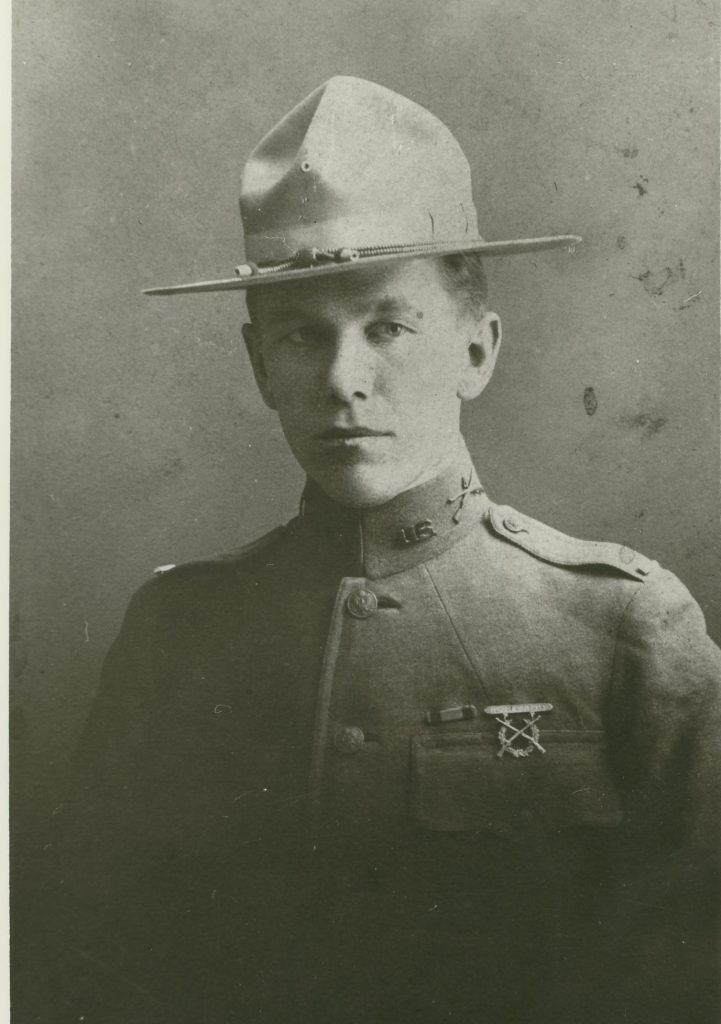
Lt. Marshall, c1907
Due to a shortage of officer housing, and new housing construction not complete, Marshall had to begin school in August living in bachelor housing. His wife, Lily, joined him later that fall when housing became available.
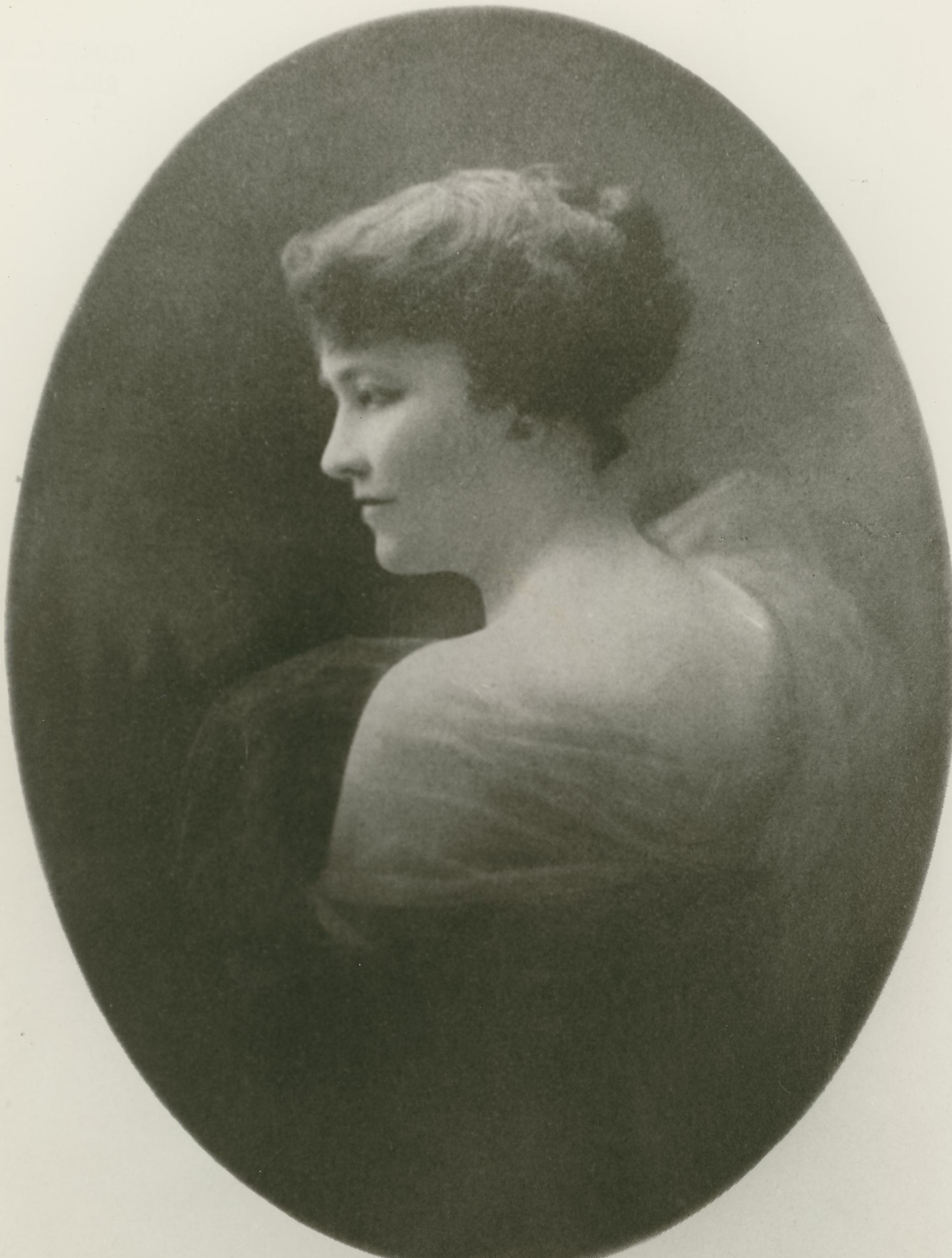
Lily Marshall taken at Fort Leavenworth
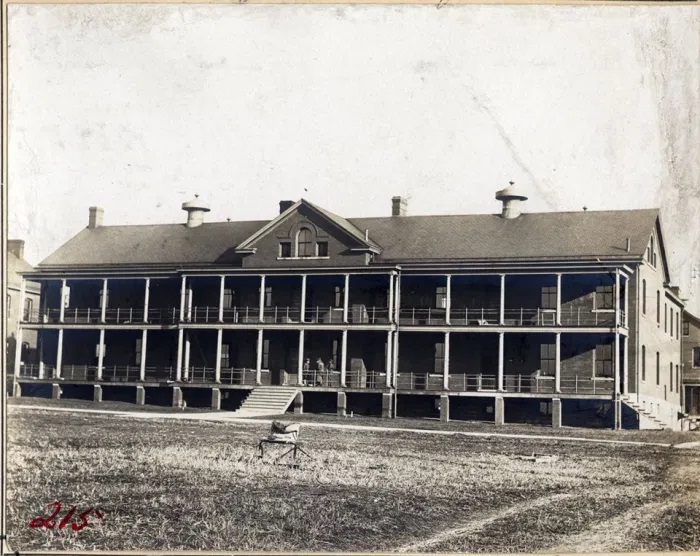
Infantry Barracks, where the Marshalls may have lived at Fort Leavenworth (Army photo)
At the beginning of school, Marshall heard two classmates talking about the few soldiers they felt would excel and be invited to stay for the second year of school, then called Army Staff College. Marshall’s name was not mentioned, and this bothered him. He determined that he would be one of those lucky few.
“I finally got into the habit of study, which I never really had before. I revived what little I had carried with me out of college and I became pretty automatic at the business . . . [but] it was the hardest work I ever did in my life” (Education of a General, p. 96).
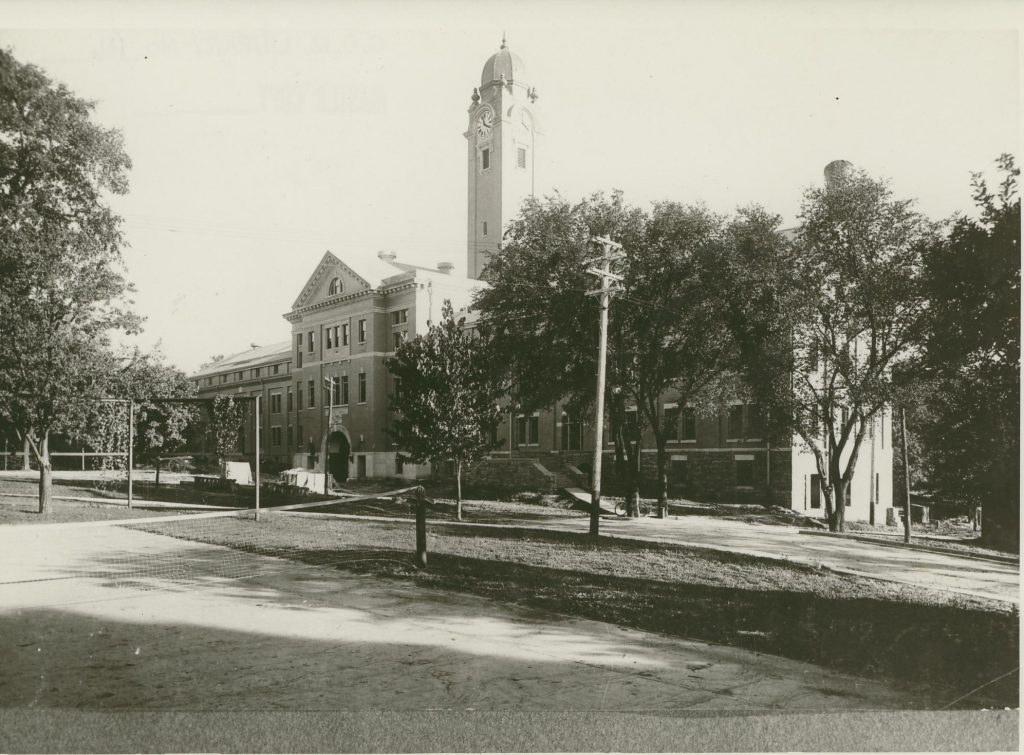
Sherman, Grant, and Sheridan halls; the CGSC classroom building when Marshall was attending (Army photo)
These were not easy months for Marshall. Long hours in class, and then studying at night were a strain that gave him insomnia, which he used in uniform preparation for the following day. “I used to get up and shine my boots; I had very shiny boots at that early period” (Education, p. 96)
When not in class or studying, Marshall preferred to be at home with Lily, who was not in good health due to a heart defect. He would explain that the couple didn’t attend many evening functions due to Lily’s frail constitution – which was the truth – but Marshall used these evenings at home to study.
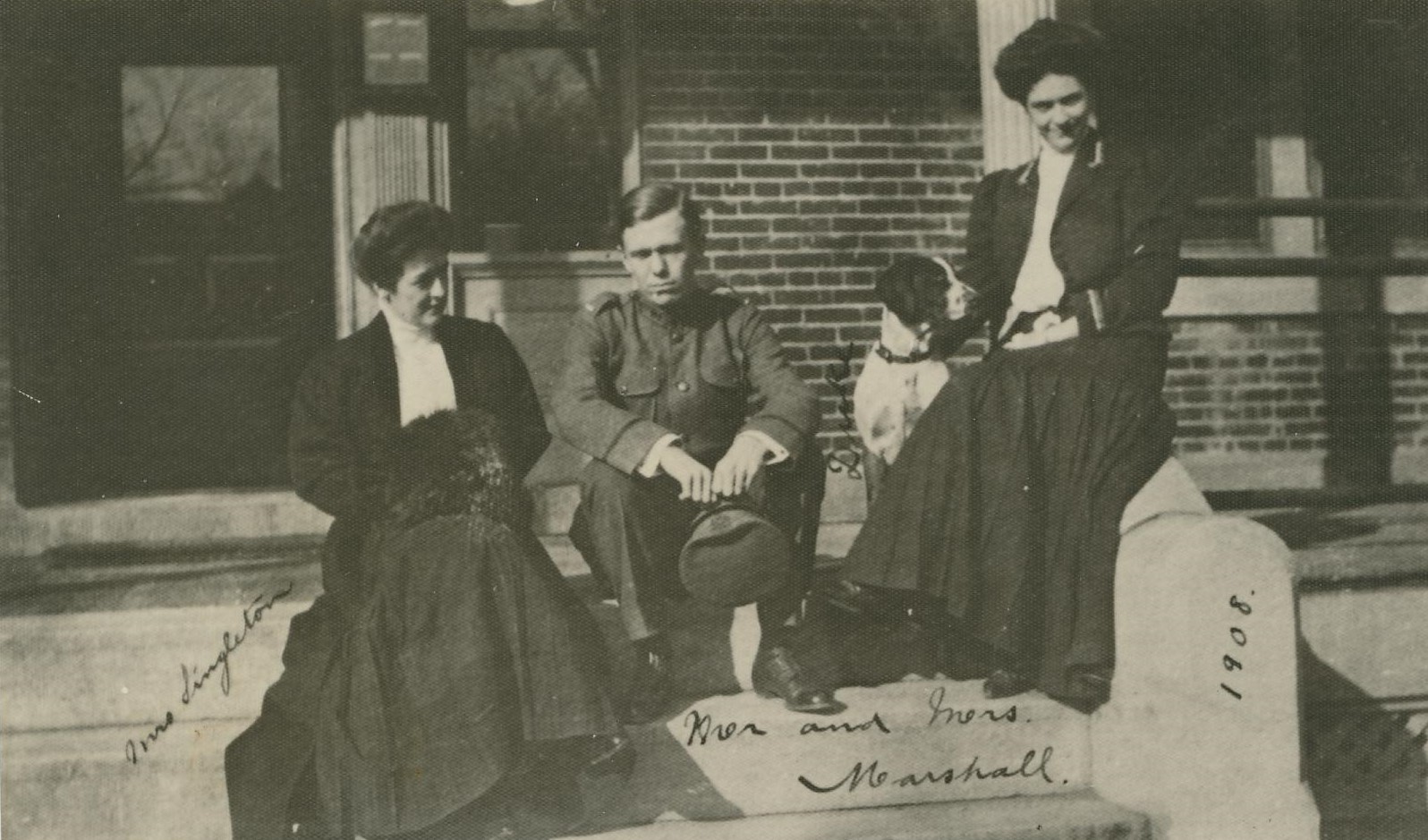
Lt. George and Lily Marshall, right, at Infantry Barracks
Frequently class tactical problems required riding out from post onto the Kansas prairie. When the problem was completed, soldiers always looked to Marshall to lead the way home; “he would go off as straight as a bee to a beehive and we would follow him” (Education, p. 97).
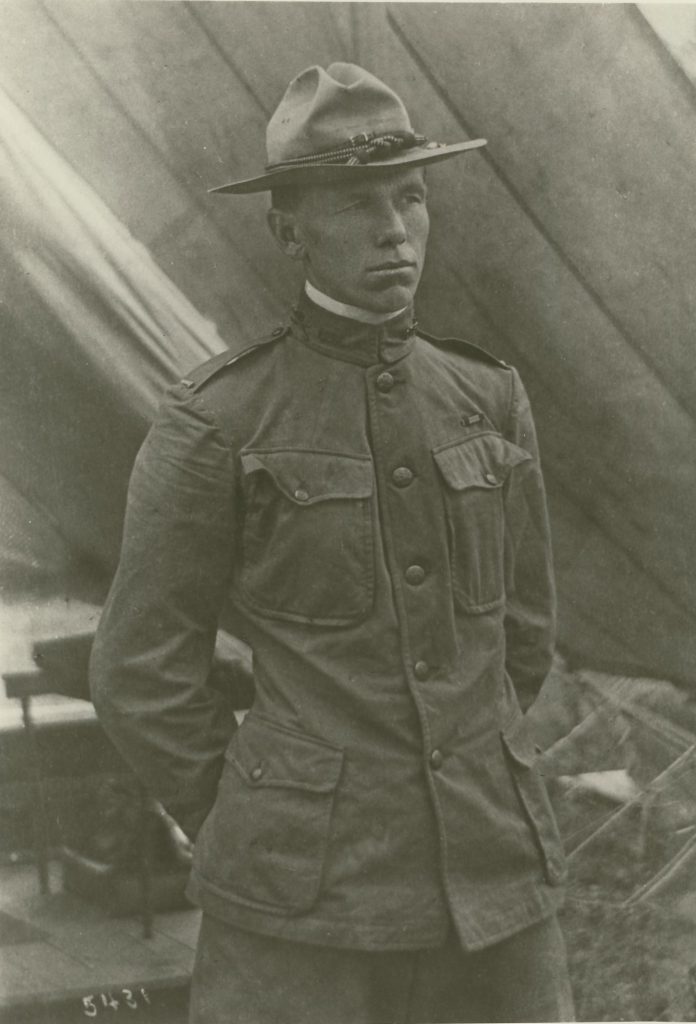
Lt. Marshall in the field, 1908
One trip home, the group was stymied by creek banks too steep for the horses. There was a railroad bridge nearby, with a couple of two-foot-wide planks across the bridge for foot traffic. Wanting to get home to Lily, Marshall rode his horse across the bridge. None of the other students followed him.
Some of the field problems lasted longer than a day, and the students would camp on the prairie as they planned tactics and troop movements, and even built bridges.
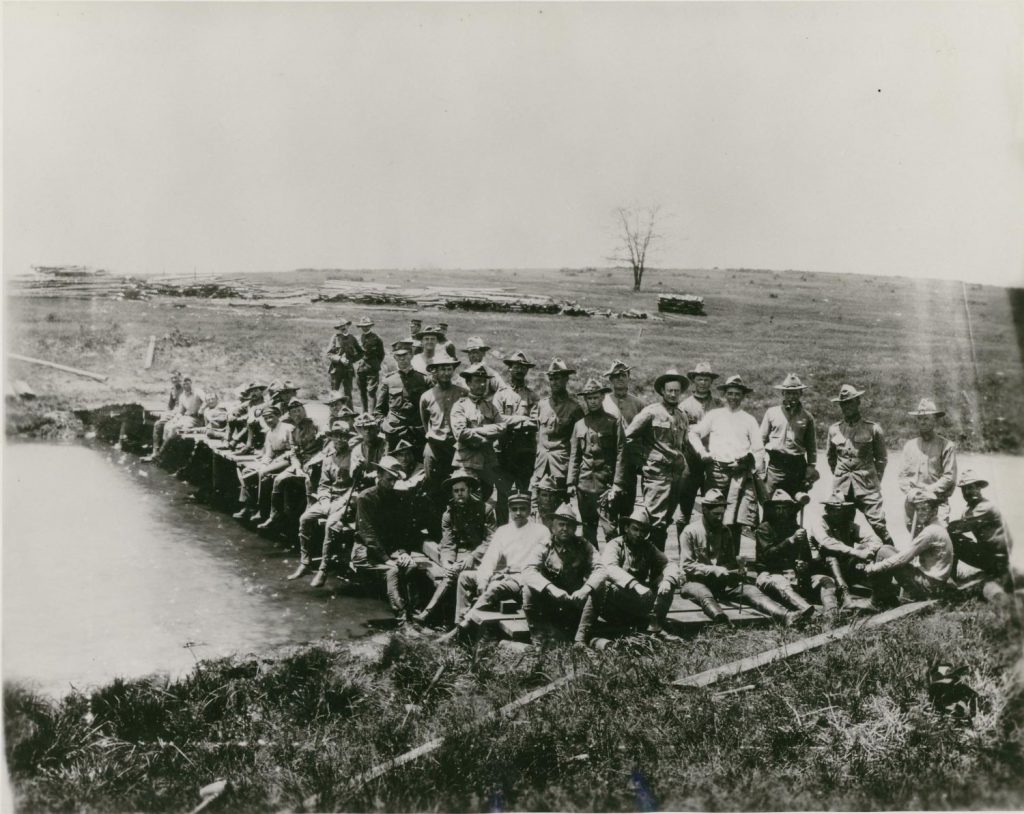
Bridge built — Marshall is in the dark uniform, far left, second row
It wasn’t all work – there was some levity, as shown in this photo of Lt. Bruce Palmer and Marshall goofing around for the camera.
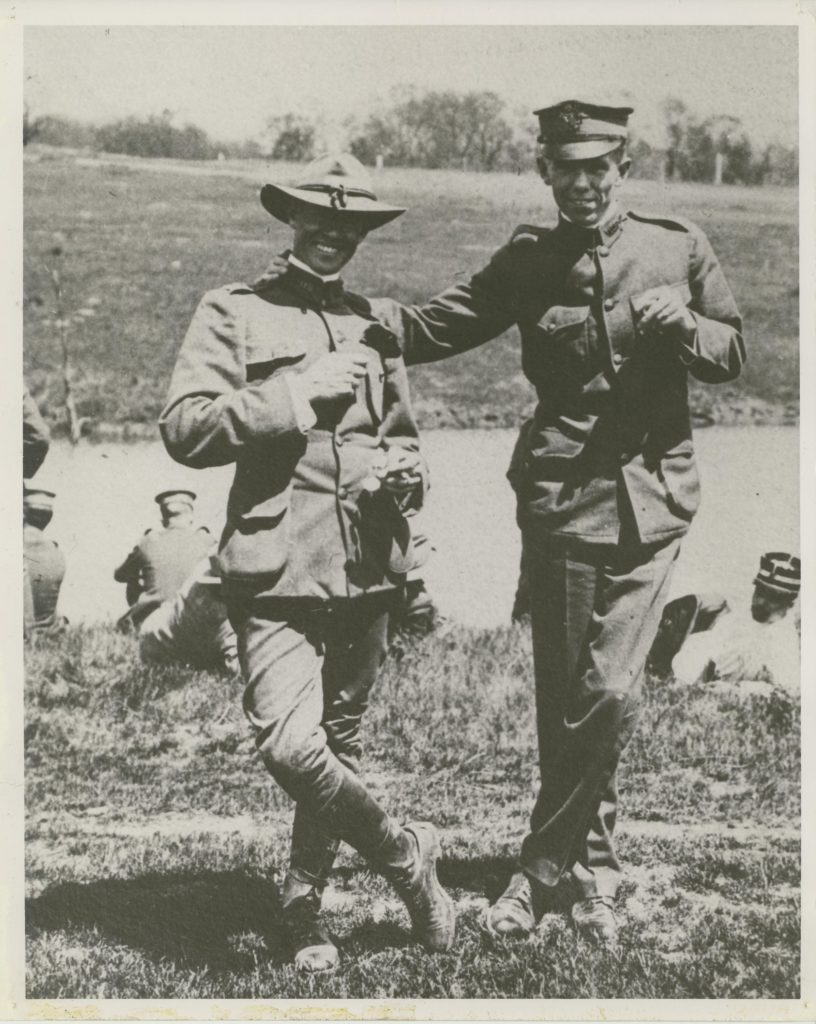
At the end of the year, grades came in, and George Marshall had done what he promised himself he would do – he was first in his class, and was invited back for Army Staff College.
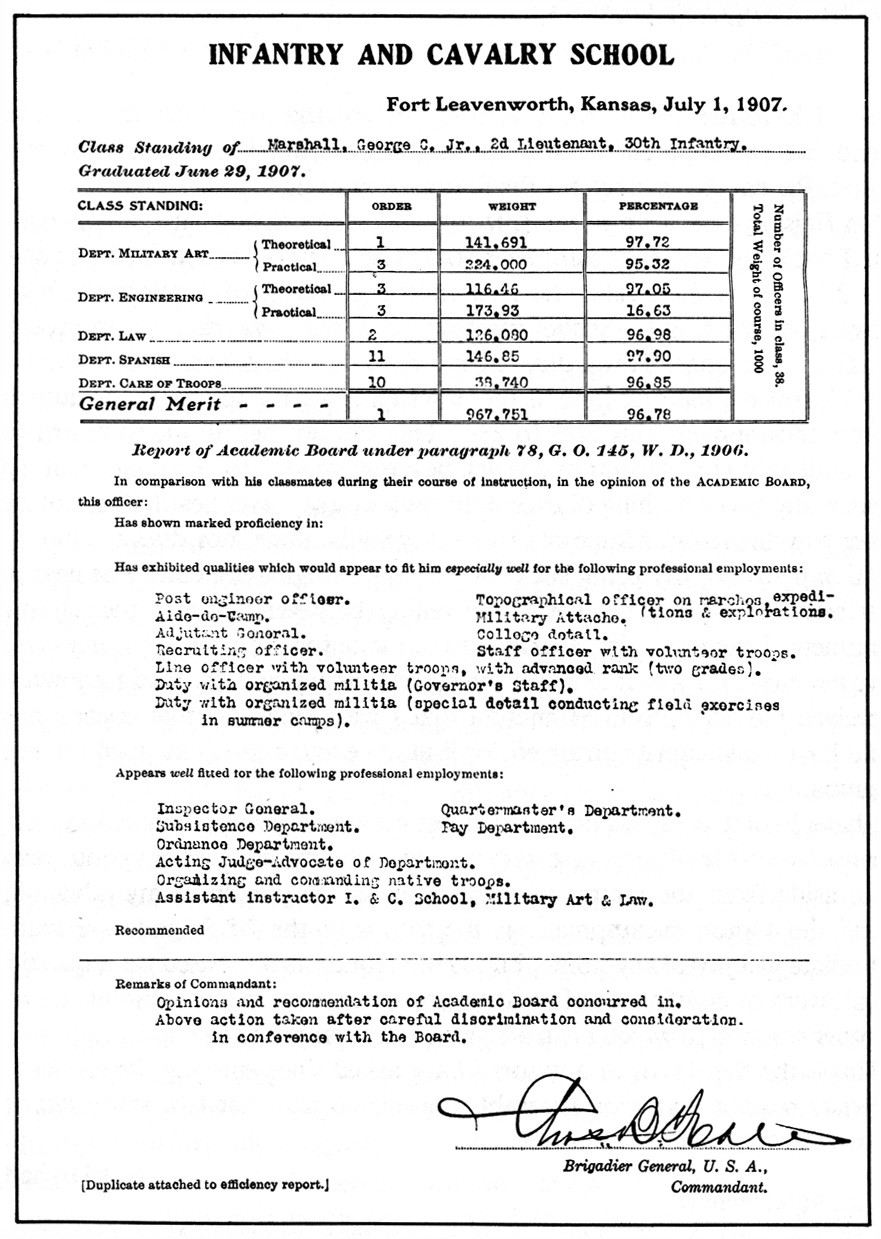
School of Line grades
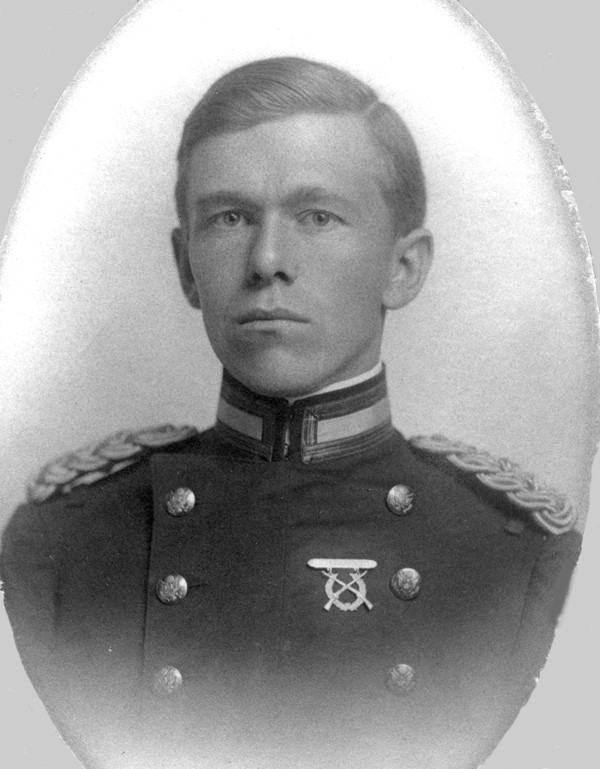
Lt. Marshall, Class of 1908
After his year at Army Staff College, George Marshall served two more as an instructor in engineering and military art at Fort Leavenworth. He had to get special permission, as he was still a lieutenant and would be teaching soldiers of higher ranks.
In 1934, the Command and General Staff School awarded a Doctor of Philosophy degree to Col. George Marshall.
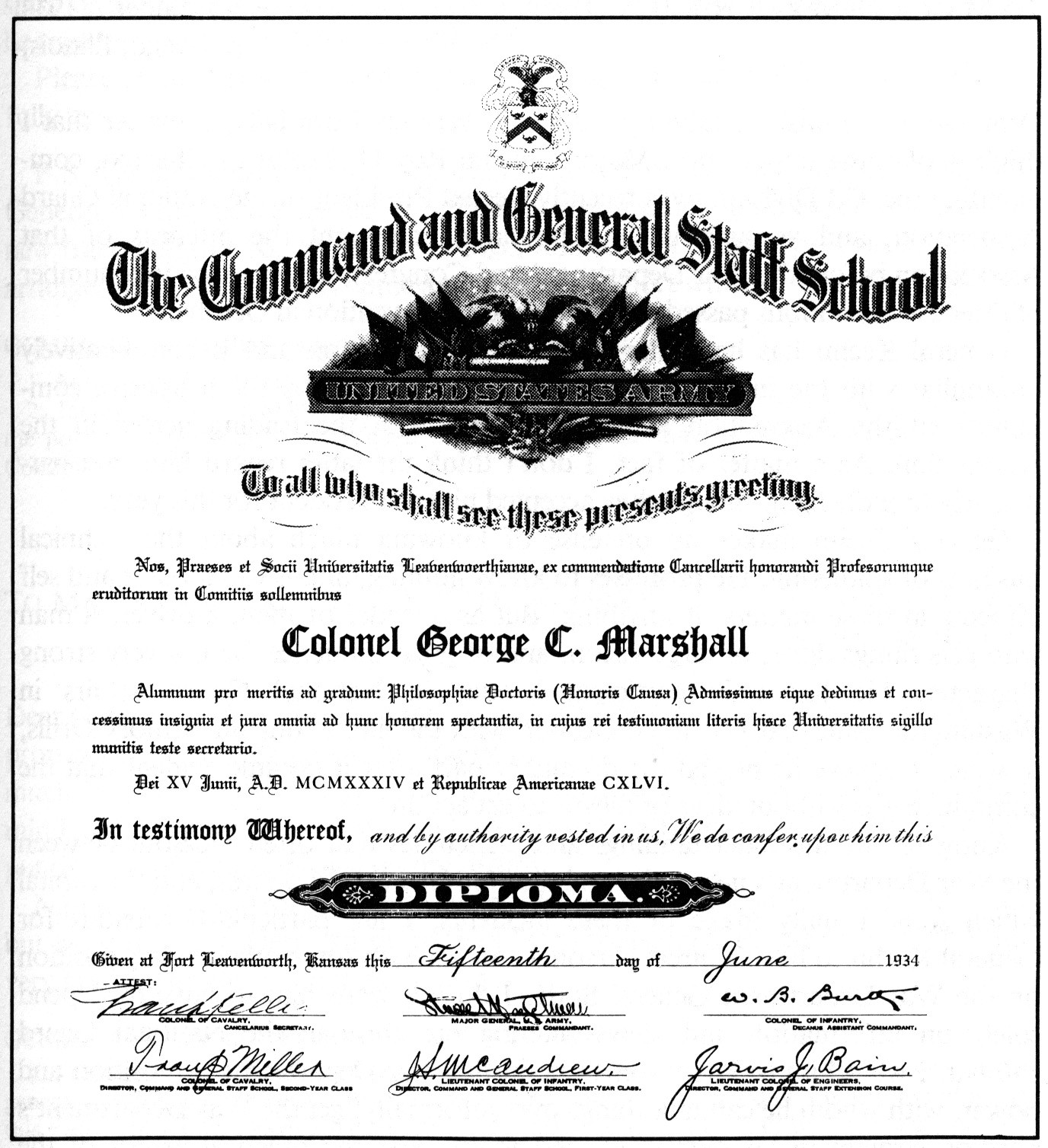
Doctor of Philosophy diploma
The school further honored him by naming the George C. Marshall Auditorium in the newly completed Bell Hall classroom building in 1959.
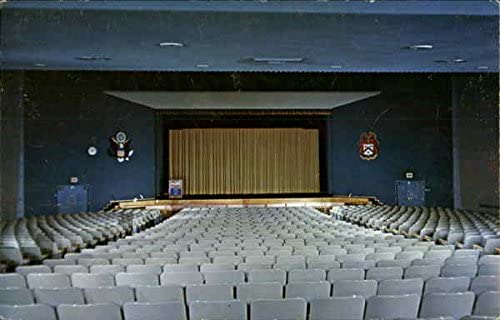
Marshall Auditorium in Bell Hall (Army photo)
When the newest classroom building, the Lewis and Clark Center, was built a few years ago, the Marshall name was carried on in the George C. Marshall Lecture Hall.
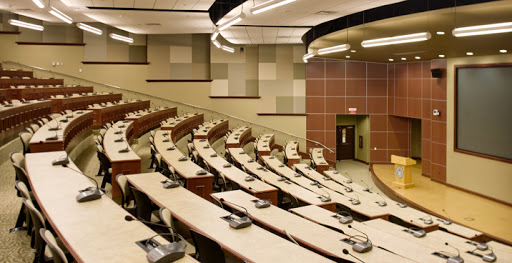
Marshall Lecture Hall in the Lewis and Clark Center (Army photo)
Marshall is remembered each year at the Command and General Staff College graduation, as the distinguished graduate is presented the George C. Marshall award, which was created in 1960.
Quoted material from Education of a General by Forrest Pogue. All photos from the George C. Marshall Foundation collection unless otherwise noted.
